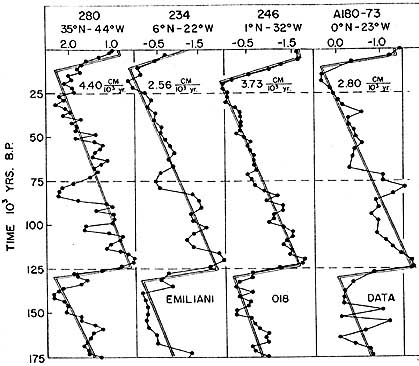We actually have some really fine grained "annual" data in the form of varves, palynology, coral records, oxygen isotope data, ice core data, and nice 14-C dating techniques.
Even Emliani in 1972 suggested that anthropogenic global warming could offset the cycles of glaciation (Emiliani, Cesare (1972). "Quaternary Paleotemperatures and the Duration of High-Temperature Intervals." Science 178: 398-401.)
We also know from Broecker et al's work that the cycles (seen in the figure below with some significant degree of resolution) should have a slow "cooling". Doesn't look like we are on that right now and just looking at single cooler year will do you no good.
(
Source)
I found this bit of information interesting:
"The ice cores themselves gave convincing evidence of the threat, according to analyses published beginning in the early 1990s. The "climate sensitivity" — the long-term response of temperature to changes in carbon dioxide — could be measured for the last glacial maximum. The answer was in the same range that computer models were predicting for our future, namely, about 3°C of warming, give or take a degree or so, if the CO2 level doubled. It was just the same range that the models got. By 2012 this finding had been confirmed not only for recent ice ages but for many other geological epochs. Evidently the computer modelers had not missed anything important. When scientists arrive at the same numerical result using wholly different methods, it gives them confidence that they are somehow in touch with reality.(53b*)" (
SOURCE)
You can read more about all this
HERE, it's a pretty cool read.
And, of course, it is more nuanced than simply waving your hand at Vostok and saying "We can't know anything!" (implying that whatever your pet hypothesis is is on as firm a ground as the actual science).





